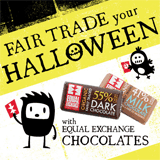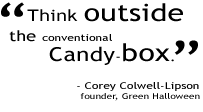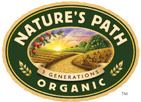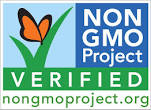Choose to be healthy, all year round!
by Erin Cox, RD
Have you noticed the candies and
chocolates crowding our grocery aisles? No doubt your children have!
Halloween is approaching and the beginning of the holiday season is
here. This is the time of year where Americans splurge, and a couple
holiday pounds can be gained. The problem is, most of those pounds
don’t come off. According to government statistics, 66% of American
adults are now overweight or obese. Our children are following
suit. The percentage of children who are overweight has almost tripled
since 1980, and now 1 in 5 kids are overweight. Unfortunately,
these numbers are climbing. It looks like those holiday pounds
are adding up. This is why we need to remember that on Halloween
and throughout this season of food splurging, healthy eating choices
are as important as ever for you and your family.
Food is a wonderful part of any
holiday celebration, which makes it a difficult time to think about
cutting back on some unhealthy favorites. To work towards this goal,
you and your family can start by deciding on a few goodies and “splurges”
that you associate with the holidays. Plan on including these; avoid
other treats that you don’t enjoy as much. Work to find other options
that are tasty and nutritious in those grocery aisles. While you
shop for goodies, there are a few things to look out for on the
Nutrition Facts Label.
Included in these are Transfat, High Fructose Corn Syrup (HFCS),
and Sodium (Salt).
Transfat is considered
one of the “bad” fats. It is so labeled because it raises
your LDL cholesterol. Increased levels of LDL cholesterol will
place you at a higher risk for heart disease and heart attack.
It is important for everyone to limit this fat, along with saturated
fat, to small amounts in their diet. Foods high in transfat
include commercially baked goods, crackers, chips, and other processed
foods. You can find transfat listed on every nutrition facts
label. You may be surprised to see that the amount of transfat
varies even in similar products; reading labels is needed in order to
make the best choice. Look for items with 0 mg of transfat.
High-Fructose Corn Syrup (HFCS),
an added sweetener, began to appear in our food supply around the 1970’s.
Its prevalence has been increasing ever since. In fact, the rise
in the amount of HFCS in our diet and the rise of obesity have been
climbing at a similar rate. Many experts say there is a connection.
The highest source of HFCS in our food comes from sweetened beverages
such as soda and juice. However, you can also find it in cereals,
yogurt, baked goods, salad dressings, candies, and canned fruit, to
name a few. To avoid this sweetener look for juices labeled 100%
juice, and items stating, “unsweetened” or “no sugars added.”
Look for high-fructose corn syrup in the Ingredient List. Items
are listed by weight, so the farther HFCS is on the list, the better.
Salt may add flavor, but
it can be dangerous. The American Medical Association is calling for
measures to reduce the sodium (salt) in our food supply. Why?
Excessive salt intake is linked to high blood pressure, leading to heart
disease and strokes. Americans consume too much salt, many consume double
or three times the amount they should. The goal is less than 2,300
mg a day. On the food label, sodium is listed in both “mg”
amounts and % Daily Value (DV). Look for snack foods to be under
150 mg, or under 6% of your DV per serving.
So what treats need to be avoided
and what are some better alternatives? Here are some ideas:
Instead of… |
Try… |
| Full-sized candy bars | Bite sized treats |
| Packaged cookies | Granola bars |
| Chips and crackers | Trail mix or unsalted nuts |
| Chewy candies (which are bad for teeth) | Sugar-free gum |
Another way to make healthy eating
a part of the holidays is to prepare foods at home. Not only is
this a great family activity, it is also an easy way to avoid transfat,
HFCS, and salt. By using canola or transfat-free margarine in
your baking instead of butter or lard, you can virtually eliminate
transfat. Your baked items can go without salt entirely. Use
sugar, not high-fructose corn syrup, to eliminate another problem ingredient.
Here are homemade treats you might try:
Popcorn balls
Fresh caramel apples
Mini pumpkin muffins
Spiced apple cider with 100% juice
Trail Mix
Want one more idea for a green Halloween? Try trick-or-treating for your local food bank! Let your neighbors know, and collect non-perishable food items instead of candy on Halloween. As members of the Seattle community we can begin to combat the obesity epidemic by joining Green Halloween and Treeswing in their efforts to promote health and wellness, for ourselves and for our environment. Explore this website for more ideas on how to make Halloween healthier with food and non-food treats!
Erin Cox, RD
Renal Dietitian
ecox@spu.edu




















